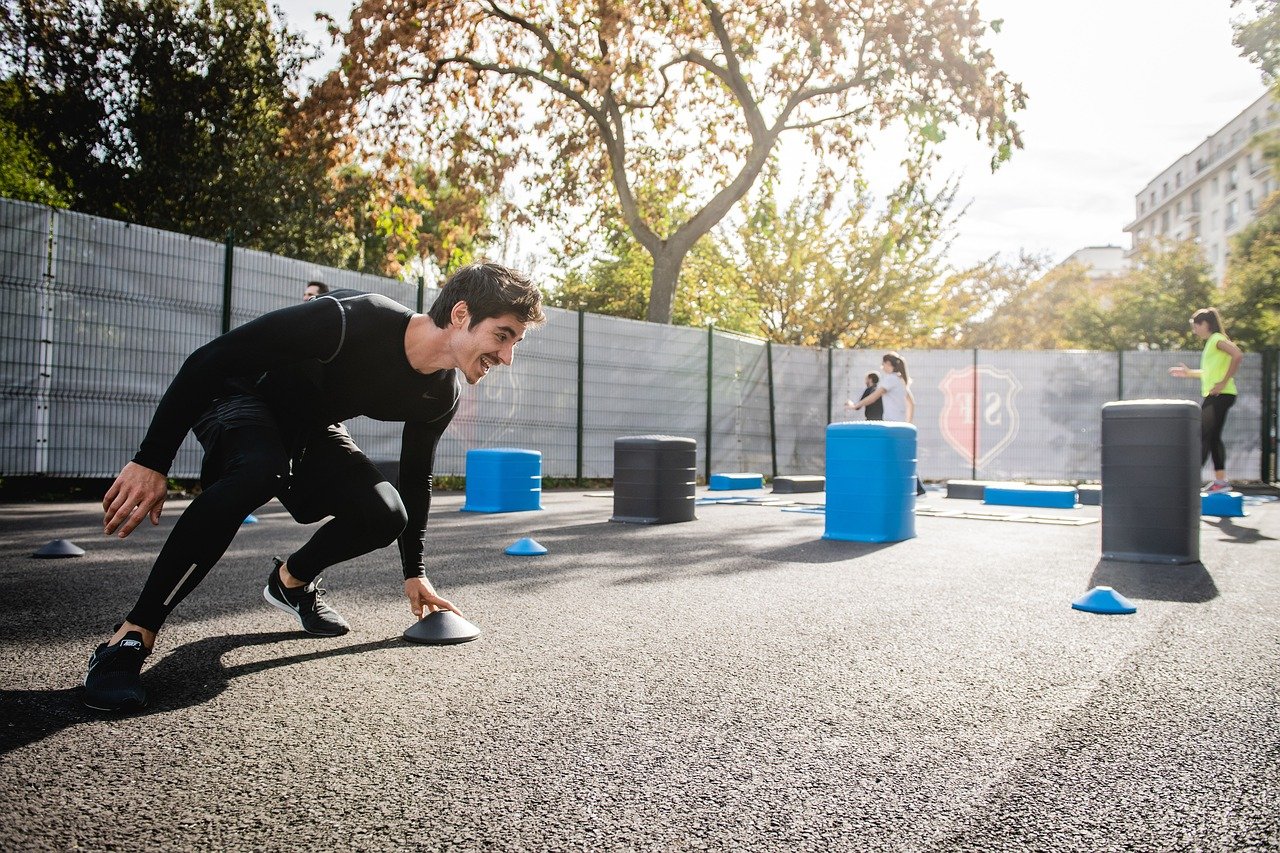Setting fitness goals can feel overwhelming, especially when you see lofty ambitions plastered across social media. Everyone seems to be posting about their latest fitness achievements, from impressive weight losses to marathons completed. The truth is, most people don’t achieve their fitness aspirations overnight. Instead, it’s the small, consistent steps that lead to significant changes over time. By focusing on realistic fitness goals, you can cultivate sustainable habits that contribute to your overall well-being.
Whether you’re just starting your journey or looking to enhance your current routine, understanding the power of achievable goals is key to your success. This article will guide you through the process of setting realistic fitness goals that keep you motivated and on track. By breaking down your ambitions into manageable steps, you’ll find that progress is not only possible but also enjoyable. Get ready to discover actionable strategies that can turn your small steps into big wins!
Understanding Realistic Goals
Realistic fitness goals are achievable targets that consider your current abilities, lifestyle, and circumstances. They should be challenging enough to inspire you but not so ambitious that they lead to frustration and burnout. When you set unrealistic goals, you set yourself up for disappointment, which can ultimately discourage you from continuing your fitness journey.
Importance of Realistic Goals
- Prevent Burnout: Overly ambitious goals can lead to a quick surge of enthusiasm, but they often result in burnout. For instance, aiming to work out every day when you’ve been inactive can lead to exhaustion and injury.
- Build Confidence: Achieving smaller, realistic goals boosts your confidence. Each success, no matter how small, reinforces your belief in your ability to achieve more.
- Long-term Sustainability: Realistic goals help you develop habits that are sustainable over the long term. When your goals are in line with your abilities and lifestyle, you’re more likely to stick with them.
For example, if your goal is to run a 5K, a realistic approach would be to start by walking for 15 minutes a day. Once that feels comfortable, you can gradually increase your pace and distance. By focusing on these incremental changes, you build a foundation that leads to long-term success. Remember, the journey of a thousand miles begins with a single step; it’s about progression, not perfection.
The SMART Criteria
A powerful framework for setting realistic fitness goals is the SMART criteria, which stands for Specific, Measurable, Achievable, Relevant, and Time-bound. Let’s break this down to see how you can apply it to your fitness journey.
Specific
Your goals should be clear and specific. Instead of saying, “I want to get fit,” aim for something like, “I want to be able to run 5 kilometers without stopping.” This specificity gives you a concrete target to work towards, making it easier to focus your efforts.
- Example: Instead of “I want to lose weight,” try “I want to lose 5 kilograms by exercising regularly and eating healthier.”
Measurable
Measuring your progress is crucial. With a specific goal in mind, you can track your achievements over time. For example, if your goal is to increase your strength, you could measure how much weight you can lift or how many push-ups you can do. Having measurable milestones helps you stay motivated as you witness your progress.
- Example: If your goal is to run, set measurable targets such as “I will increase my running distance by 0.5 kilometers every week.”
Achievable
Your goals should be realistic and attainable given your current situation. If you’ve never run before, setting a goal to run a marathon in a month is unrealistic. Instead, focus on running a mile or two first, then gradually increasing your distance.
- Example: If you currently walk 10 minutes a day, an achievable goal could be to walk for 20 minutes a day by the end of the month.
Relevant
Ensure that your goals align with your personal interests and values. If you dislike running, setting a goal to run a marathon may not be relevant to you. Instead, consider swimming, cycling, or yoga—whatever excites you and feels enjoyable. When your goals resonate with you, they become more motivating.
- Example: If your passion lies in group activities, consider setting a goal to join a weekly dance class instead of running solo.
Time-bound
Establish a timeframe for your goals. Instead of saying, “I want to lose weight,” specify, “I want to lose 5 kilograms in the next three months.” Having a deadline creates a sense of urgency and encourages you to take action.
- Example: “I will complete a 30-day fitness challenge by the end of this month.”
By applying the SMART criteria to your fitness goals, you create a structured approach that can lead to lasting success.
Breaking Down Big Goals

Big goals can be intimidating, but breaking them down into smaller, manageable steps makes them more approachable. Start by identifying your larger fitness aspiration—whether it’s completing a triathlon or achieving a specific weight loss target. Here’s how you can break down those big goals:
- Write It Down: Jot down your main goal. This not only makes it tangible but also serves as a reminder of what you want to achieve. Writing reinforces commitment.
- Identify Milestones: Break your main goal into smaller milestones. For example, if your goal is to lose 10 kilograms, you might set a milestone of losing 1 kilogram per week. These milestones act as checkpoints that keep you accountable and motivated.
- Create Actionable Tasks: List specific tasks you need to accomplish for each milestone. If one milestone is to run for 30 minutes, your tasks could include walking for 10 minutes, then progressing to 20, and finally to 30.
- Set a Timeline: Assign deadlines to your milestones. This keeps you accountable and motivated as you work towards each step. For example, if you want to lose 5 kilograms, you could aim to lose 1 kilogram every two weeks.
- Celebrate Small Wins: Each time you achieve a milestone, take a moment to celebrate your success. This could be treating yourself to a massage or simply acknowledging your progress. Celebrating reinforces positive behavior and keeps you focused on your goals.
By dissecting your big goals, you make the journey feel less daunting and more achievable.
Creating a Supportive Environment
Your environment plays a crucial role in achieving your fitness goals. A supportive atmosphere can motivate you to stay on track, while a negative one can hinder your progress. Here are some tips to create an encouraging environment:
- Involve Family and Friends: Share your fitness goals with loved ones. Having their support can make a significant difference. They may even want to join you on your journey, turning workouts into fun activities. This not only keeps you motivated but also builds a sense of community.
- Choose the Right Workout Space: Whether it’s a gym, a park, or your living room, ensure that your workout space is conducive to your efforts. Keep it tidy and equipped with the necessary gear to help you stay motivated. A clean, organized space can significantly impact your mindset.
- Surround Yourself with Positivity: Follow motivational fitness accounts on social media, listen to inspiring podcasts, or read books that uplift you. Being surrounded by positive influences can enhance your mindset and keep you focused on your goals.
- Join a Community: Consider joining a fitness class or online group. Engaging with others who share similar goals provides camaraderie and motivation. Plus, you can exchange tips and support one another. Finding a community can also make workouts more enjoyable.
- Limit Negative Influences: Be mindful of negative influences, such as discouraging comments from others or toxic environments. Surround yourself with those who uplift and encourage you in your journey.
Creating a supportive environment helps reinforce your commitment to your fitness journey, making it easier to stay focused and motivated.
Tracking Progress
Tracking your progress is an essential aspect of reaching your fitness goals. When you can see how far you’ve come, it boosts your confidence and keeps you motivated. Here are various methods to track your progress:
- Fitness Journals: Writing down your workouts, meals, and feelings can provide insights into your progress. It also allows you to reflect on your achievements and adjust your approach as needed. Journaling can help identify patterns in your behavior and enhance your accountability.
- Mobile Apps: Numerous apps can help you track workouts, calorie intake, and overall progress. Find one that resonates with you and suits your needs, whether it’s for running, strength training, or yoga. Popular apps like MyFitnessPal and Strava can provide comprehensive tracking and community support.
- Fitness Trackers: Wearable devices can monitor your daily activities, heart rate, and sleep patterns. They offer a comprehensive view of your health and fitness levels, helping you stay accountable. Devices like Fitbit or Garmin can provide real-time feedback and progress reports.
- Progress Photos: Taking regular photos of yourself can visually showcase your transformation over time. It’s a powerful reminder of your hard work, even when the scale isn’t moving as fast as you’d like. Consider taking photos every month in consistent lighting and clothing for accurate comparisons.
- Regular Assessments: Set a schedule for regular assessments of your progress, whether it’s bi-weekly weigh-ins, monthly fitness tests, or quarterly goal evaluations. These assessments can help you stay accountable and make necessary adjustments to your routine.
By finding a tracking method that resonates with you, you can maintain motivation and clarity throughout your fitness journey.
Staying Motivated

Maintaining motivation is essential, especially when progress feels slow or plateaus happen. Here are some strategies to help you stay motivated on your fitness journey:
- Visual Reminders: Create a vision board with images and quotes that inspire you. Place it in a visible spot to remind you of your goals. Visualizing your aspirations can reinforce your commitment and excitement.
- Reward Yourself: Set up a reward system for achieving milestones. Treat yourself to new workout gear, a spa day, or a healthy treat. Celebrating your successes reinforces positive behavior and keeps you engaged.
- Mix Up Your Routine: Boredom can kill motivation. Change your workouts regularly by trying new activities, classes, or sports. Variety keeps your routine fresh and exciting, making it easier to stay committed.
- Find an Accountability Partner: Partner with someone who shares similar fitness goals. You can motivate each other, share progress, and keep each other accountable. Whether it’s a friend or a fitness group, social connections enhance motivation.
- Reflect on Your Why: Remind yourself why you started this journey in the first place. Whether it’s for health, confidence, or overall well-being, keeping your motivations front and center helps you push through challenging days.
Staying motivated is an ongoing effort, but with the right strategies, you can maintain your enthusiasm and commitment to your fitness goals.
Conclusion
Achieving fitness goals doesn’t have to be an overwhelming task. By focusing on realistic objectives and breaking them down into manageable steps, you can create a sustainable fitness journey that leads to lasting change. Remember the SMART criteria and the importance of tracking progress, creating a supportive environment, and staying motivated. Embrace the small steps, and celebrate your achievements along the way. In the end, it’s not just about the destination; it’s about the journey and the healthy habits you build along the way. You have the power to transform your fitness aspirations into reality—one small step at a time!





